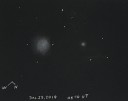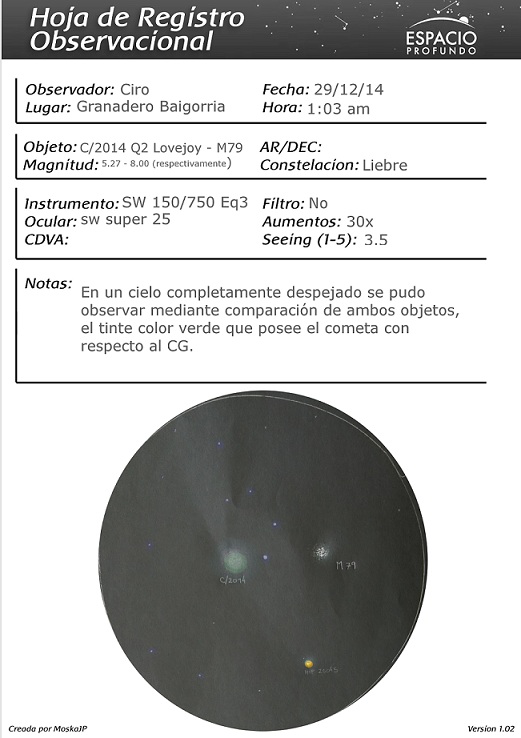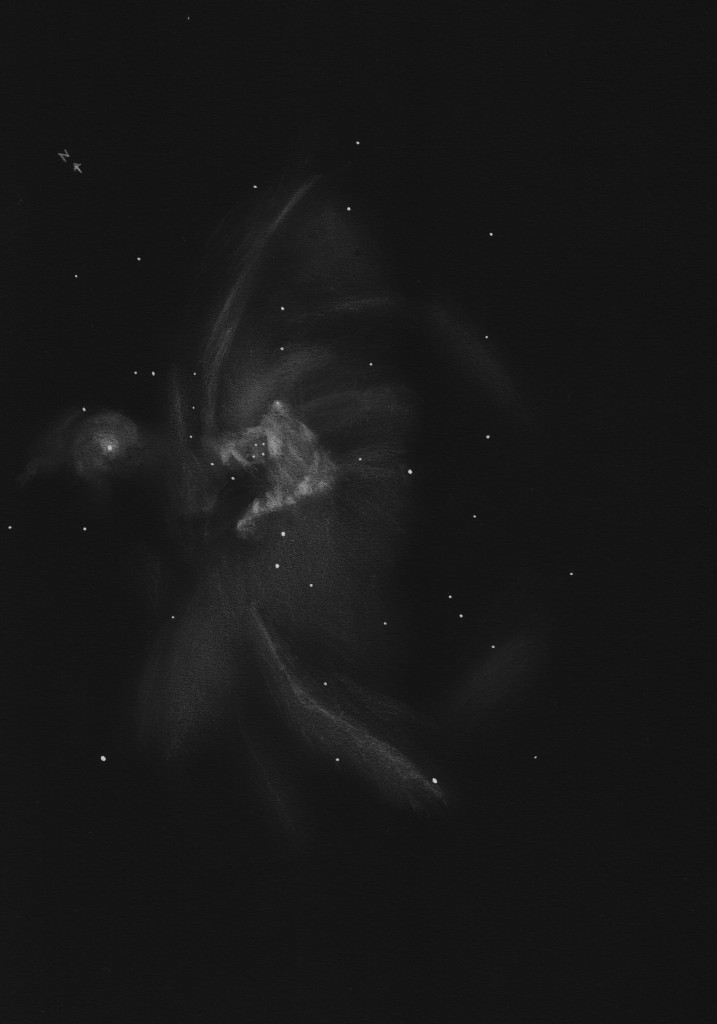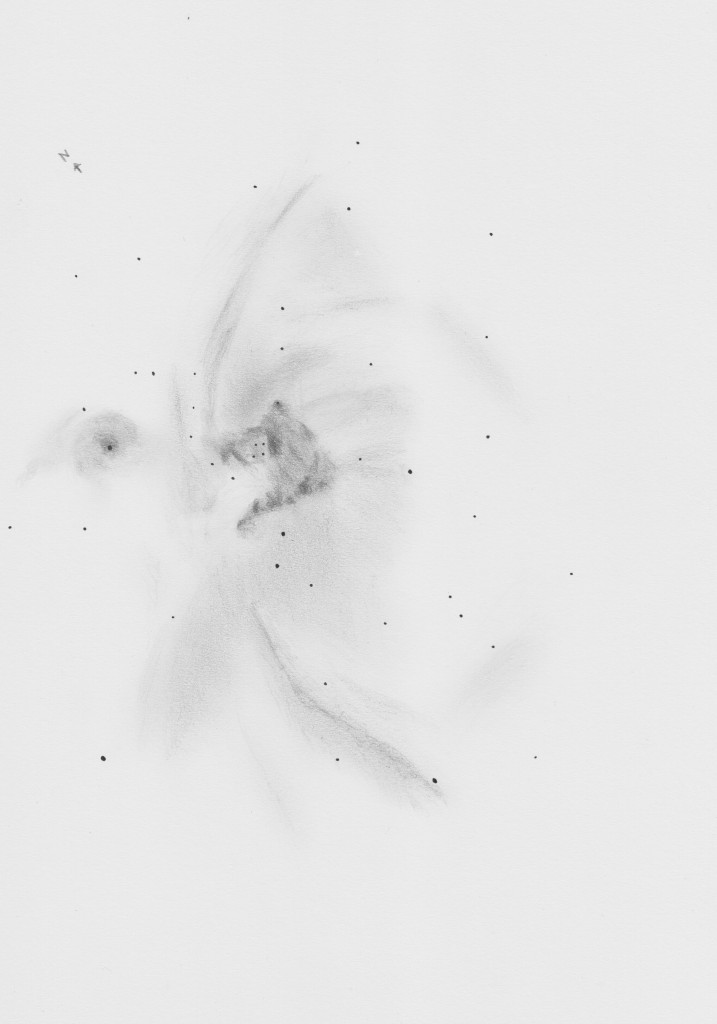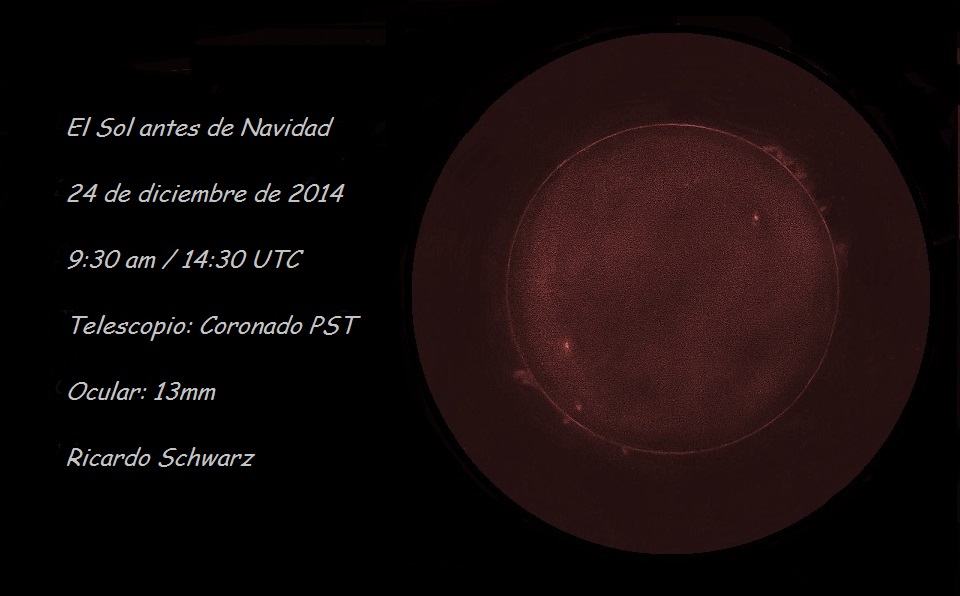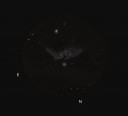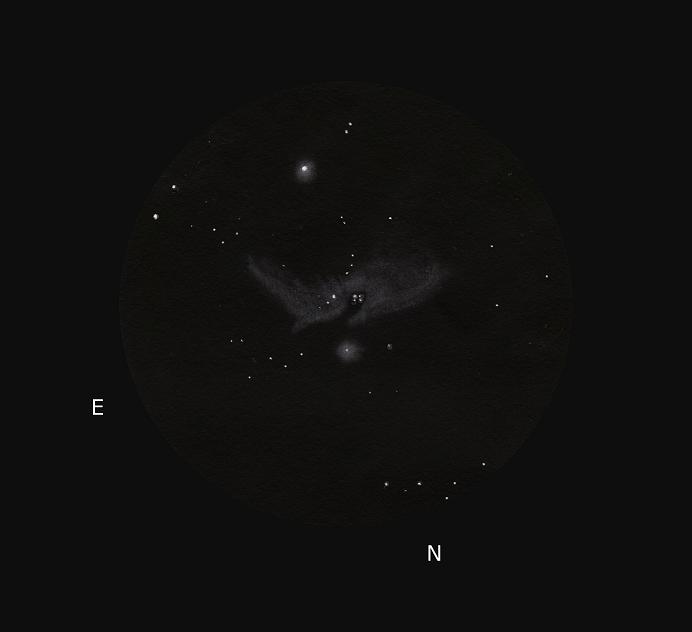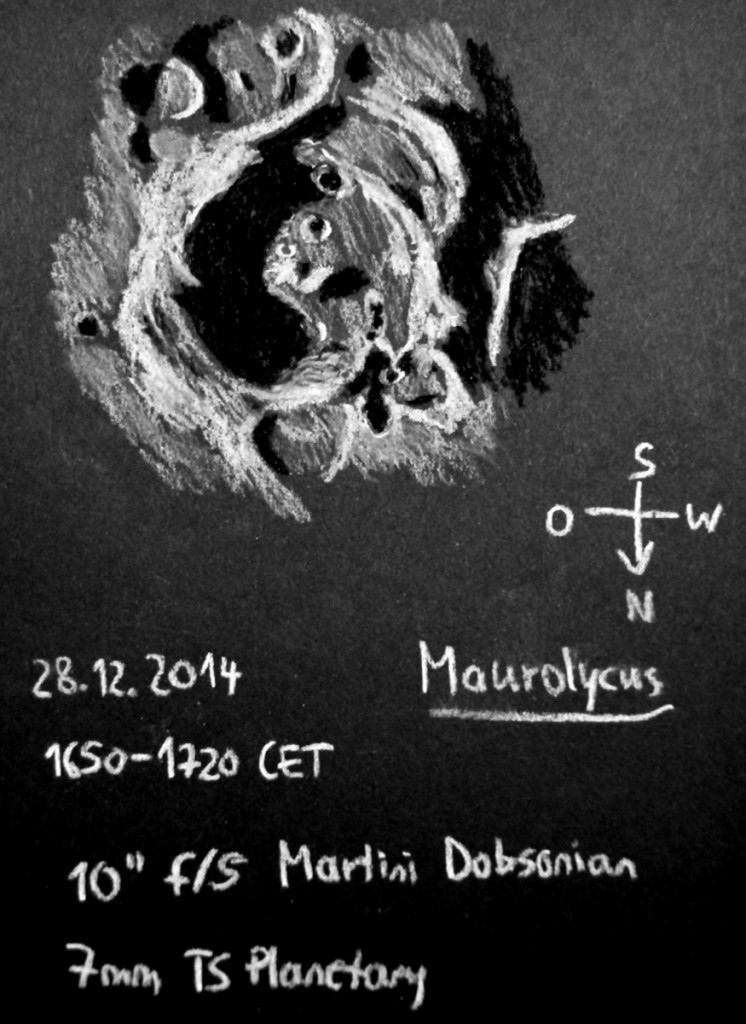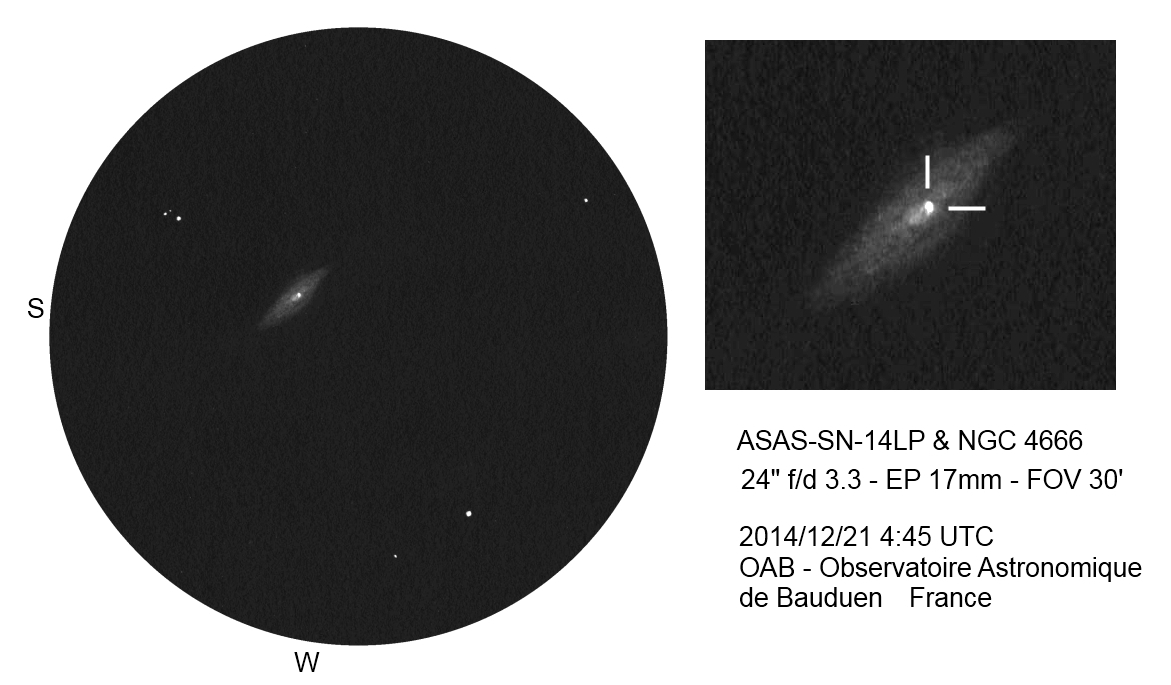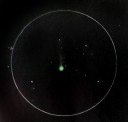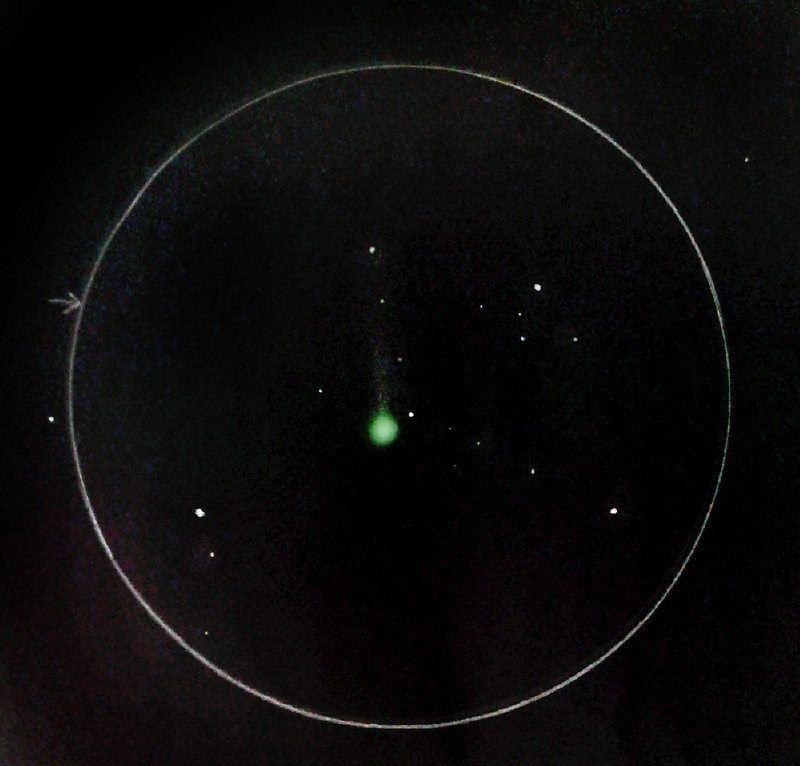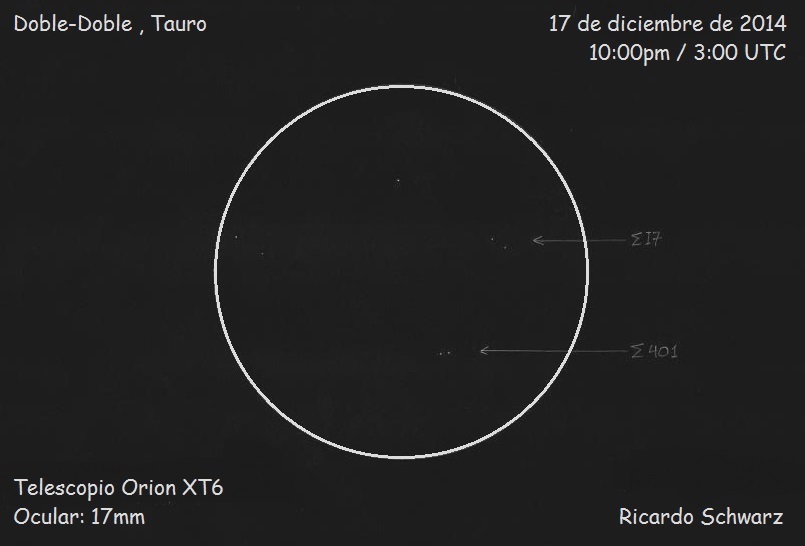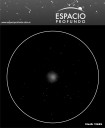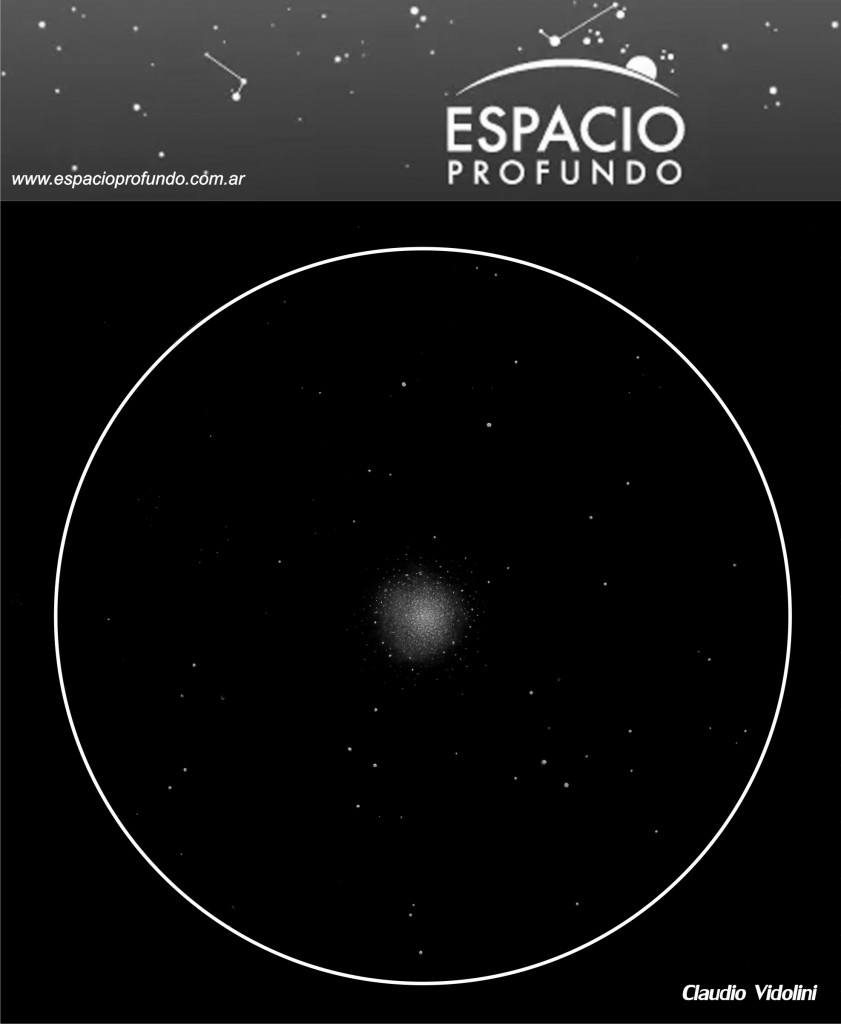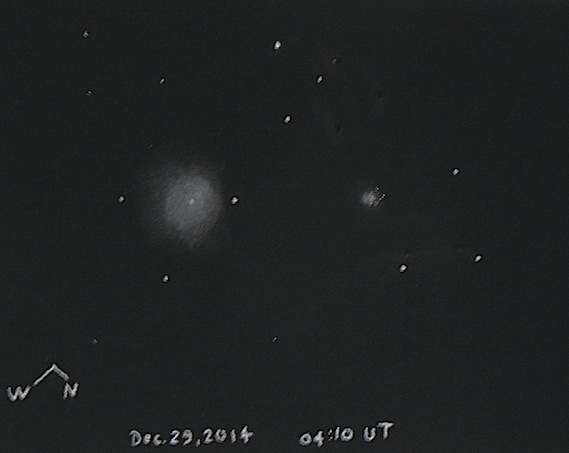
M79 and Comet Lovejoy in Lepus
I have been monitoring comet Lovejoy (C/2014 Q2) for the past several nights and on this occasion they both shared the same field of view at130 power. I was using my daughter’s 10 inch Orion Dobsonian telescope and was able to capture this sketch under clear skies and good seeing conditions. The observation site was in eastern Mesa, Arizona with a good view to the south. The comet can be seen much brighter and larger in angular size than than 8.5 magnitude globular cluster M 79. This was a pleasing view at the eyepiece with the comet showing a hint of green color. I switched to 48 power and a wider field of view for the sketch.
Sketching:
White and Black Conte’ pastel pencils on black sketching paper
blending stump and Pink Pearl eraser also used
R.A. 05hr 24′ ; Dec. -24 degrees 33min.
Comet distance less than 100million km.
M79 distance 42,100 light years 150 million stars
Frank 🙂
